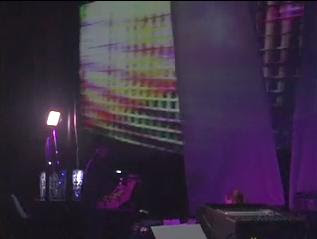 The Serge Creature and M-Class Panel pages are up! You can find them on the Serge section of Carbon111. You will find more info and images, so go check it out!
The Serge Creature and M-Class Panel pages are up! You can find them on the Serge section of Carbon111. You will find more info and images, so go check it out!Pictured: Sequencer A.
EVERYTHING SYNTH

 The Serge Creature and M-Class Panel pages are up! You can find them on the Serge section of Carbon111. You will find more info and images, so go check it out!
The Serge Creature and M-Class Panel pages are up! You can find them on the Serge section of Carbon111. You will find more info and images, so go check it out! Bookmarking this one for a rainy day. More info here.
Bookmarking this one for a rainy day. More info here. via Kyle on the Analog Heaven mailing list: "Gather up your analogs and come on down! AHNE 2008 (Analogue Heaven NorthEast) will be held on Saturday April 26 in Bolton, Massachusetts. Visit our website for more information at: link. deknow will kindly be hosting an afterparty nearby on Saturday evening. Thanks to Eric Crawley for getting this great thing started, and for all of the local volunteers helping out in so many ways!"
via Kyle on the Analog Heaven mailing list: "Gather up your analogs and come on down! AHNE 2008 (Analogue Heaven NorthEast) will be held on Saturday April 26 in Bolton, Massachusetts. Visit our website for more information at: link. deknow will kindly be hosting an afterparty nearby on Saturday evening. Thanks to Eric Crawley for getting this great thing started, and for all of the local volunteers helping out in so many ways!"
 via Alex
via Alex via Narbotic
via Narbotic Here's the link to the download.
Here's the link to the download.
 "Bringing together some of today’s leading composers, performers and designers for a real-time presentation of works centered around the revival of analog synthesis, Analoglive! was a concert held at the Roy and Edna Disney/CalArts Theatre, REDCAT in Walt Disney Concert Hall, on November 16, 2007. "
"Bringing together some of today’s leading composers, performers and designers for a real-time presentation of works centered around the revival of analog synthesis, Analoglive! was a concert held at the Roy and Edna Disney/CalArts Theatre, REDCAT in Walt Disney Concert Hall, on November 16, 2007. " click here for the post with link on Casper Electronics. Nice image/art.
click here for the post with link on Casper Electronics. Nice image/art.
 via Cliplead where you'll find info on how to remove the front panel as well as a link to a flickr set with more shots of the inside.
via Cliplead where you'll find info on how to remove the front panel as well as a link to a flickr set with more shots of the inside.
 "In 2007, we held the exclusive UK launch exhibitions of TENORI-ON at Phonica Records London (4th Sept) and theMint Lounge Manchester (5th Sept). Following the huge TENORI-ON success in the UK, we can finaliy proudly announce to hold the TENORI-ON world Launch Tour." more info including the schedule here
"In 2007, we held the exclusive UK launch exhibitions of TENORI-ON at Phonica Records London (4th Sept) and theMint Lounge Manchester (5th Sept). Following the huge TENORI-ON success in the UK, we can finaliy proudly announce to hold the TENORI-ON world Launch Tour." more info including the schedule here
 "This is a project page describing the progress of my current 220C quarter project.
"This is a project page describing the progress of my current 220C quarter project. 
 via daddio of Tapewarm.
via daddio of Tapewarm.











